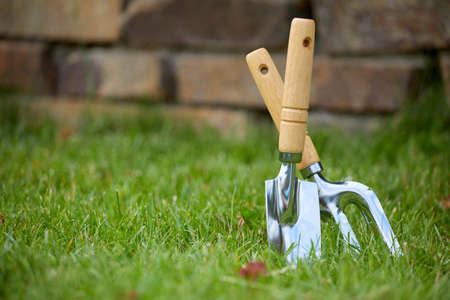Exploring the Heritage of British Garden Tools
There’s a timeless magic in the traditional British garden, where every tool tells a story and every spade or trowel is more than just an implement—it’s a piece of living heritage. For generations, families across the UK have cherished their garden tools not only for their practicality but also for the memories and skills passed down through their use. The craftsmanship behind these tools reflects the heart and soul of British culture, blending durability with elegance. Whether it’s a well-worn wooden-handled fork or a perfectly balanced hand hoe, each tool holds echoes of shared afternoons among flower beds, laughter between rows of vegetables, and the gentle guidance of one generation teaching another. In many British households, these cherished implements become treasured heirlooms, symbolising both hard work and a love of nature that grows stronger with every passing season.
2. Sourcing Authentic British Garden Tools
Finding traditional British garden tools is a journey that weaves together heritage, community spirit, and the joys of discovery—a bit like unearthing a long-lost treasure in your own garden. Whether you’re nurturing your allotment with little ones or sharing stories about granddad’s favourite spade, sourcing authentic tools can become a wonderful family adventure rooted in local culture.
Local Markets: Community Connections
Start your search at bustling local markets, where independent traders often offer hand-forged trowels, sturdy forks, and lovingly restored secateurs. These markets are more than shopping spots—they’re hubs for exchanging gardening tips and stories. Take the children along; let them touch, feel, and ask questions about each tool’s history. It’s the perfect way to plant seeds of curiosity and respect for craftsmanship.
Car Boot Sales: Hidden Treasures Await
If you love a good weekend adventure, car boot sales are a quintessentially British experience. Early mornings spent rummaging through stalls can lead to unexpected discoveries—perhaps an heirloom watering can or a well-worn dibber with decades of stories embedded in its grain. Children will delight in hunting for tools with character, learning patience and the thrill of second-hand finds.
Specialist Shops: Expert Advice and Quality Craft
For those seeking expert guidance or rare finds, specialist garden tool shops are invaluable. Staff often have deep-rooted knowledge of traditional brands, materials, and restoration techniques. Visiting together as a family opens up conversations about quality versus quantity—helping children understand why some things are worth cherishing over generations.
Where to Source Traditional Tools: At-a-Glance Guide
| Sourcing Location | What Youll Find | Cultural Experience |
|---|---|---|
| Local Markets | Locally crafted & vintage tools | Community interaction & hands-on learning |
| Car Boot Sales | Heirloom & second-hand treasures | Bargain hunting & storytelling opportunities |
| Specialist Shops | Expertly made or restored tools | Knowledge sharing & craftsmanship appreciation |
By weaving these sourcing adventures into family life, you nurture not only your garden but also the roots of tradition—passing down values alongside trusty old forks and trowels. Each tool carries a story, waiting for new hands to continue its journey in British soil.
![]()
3. Getting to Know Your Tools Together
One of the joys of tending a British garden as a family is discovering the unique stories each traditional tool holds. Gather your children around and pick up that old wooden-handled trowel or the well-worn spade—these are more than just implements for digging and planting; they’re living links to generations of gardeners who have shaped Britain’s green landscapes before us.
Encourage curiosity by tracing each tool’s origins. Was it forged in Sheffield, renowned for its steelwork? Or perhaps it was lovingly crafted by a local blacksmith in your village many years ago? Share these details with your children, sparking conversations about how everyday objects can hold memories and reflect a community’s history.
Make it an interactive adventure: let little ones feel the weight and texture of different handles, compare sizes, and guess what each tool might be used for. Take time to explain the purpose behind each one—whether it’s the delicate fork for aerating soil or the sturdy hoe for tackling stubborn weeds. As you explore together, you’re not just teaching gardening skills; you’re nurturing a sense of stewardship and appreciation for craftsmanship.
By connecting with these stories, families can see themselves as part of an ongoing tradition. Just as plants root themselves deeply in the earth, your family roots itself in the rich heritage of British gardening, growing stronger with each shared tale and treasured tool.
4. Caring for Garden Tools: Tips and Traditions
There’s a certain British charm in tending to your garden tools, much like nurturing the plants themselves. Caring for these trusty companions is a gentle ritual often passed from one generation to the next. After a rewarding day spent digging in the rain or pruning beneath grey skies, it’s time to bring those tools into the shed for a bit of TLC. Here’s how families across Britain lovingly maintain their garden tools, blending practical tips with timeless tradition.
Washing Off the Day’s Work
Start by rinsing soil and grit from spades, forks, and trowels under an outdoor tap or with a stiff brush. This simple act not only preserves the metal but also provides a moment to share stories about the day’s discoveries among your vegetable patches or flower borders.
Drying and Storing Properly
British weather can be famously damp, so drying tools thoroughly is essential to prevent rust. Some families lay out their tools on old towels, while others hang them up in a well-aired shed—an ideal spot for children and grown-ups alike to gather, chat, and listen to raindrops on the roof.
Oiling Wooden Handles
Wooden handles are given extra care using linseed oil or mineral oil—a soothing task that little hands can help with under supervision. This keeps handles smooth and strong, ensuring they feel just right when passed down through the family.
Traditional Tool Care: A Handy Table
| Task | What To Use | When To Do It |
|---|---|---|
| Cleaning metal parts | Stiff brush & water | After each use |
| Drying thoroughly | Towel or air-drying rack | Immediately after cleaning |
| Oiling wooden handles | Linseed oil/mineral oil & cloth | Once a season (or as needed) |
| Tightening bolts/screws | Screwdriver/spanner | Monthly check-in |
A Cosy Family Tradition
Caring for tools is more than just maintenance—it’s an opportunity for connection. As you polish shears or oil handles together in the glow of your cosy shed light, conversations often turn to memories of gardens past and hopes for new seasons ahead. This gentle rhythm of care weaves bonds between generations, keeping both tools and family traditions alive.
5. Passing Down Tools and Stories
One of the most heartwarming traditions in British gardening is the passing down of well-loved tools, along with the stories and wisdom that accompany them. This ritual goes beyond simply giving a trowel or fork; it’s about nurturing a sense of belonging, continuity, and responsibility among younger generations. In many British families, a spade with a worn handle or a pair of sturdy shears isn’t just a tool – it’s a living piece of family history.
Sharing these treasured implements invites children into the world of gardening with gentle hands and open hearts. As parents or grandparents place their favourite hand fork in a child’s grasp, they often share tales of lush allotments, rainy afternoons spent planting bulbs, or the pride of the first homegrown strawberry. These stories cultivate not just knowledge but also values: patience, respect for nature, and the importance of caring for one’s surroundings.
This tradition also encourages young gardeners to take responsibility for both their tools and the land they tend. The act of oiling an old wooden handle or sharpening a blade together becomes an opportunity for meaningful conversation, sparking curiosity and deepening bonds. Children learn that with each use, they are adding their own chapter to the family’s gardening legacy – growing roots that connect generations through both soil and story.


